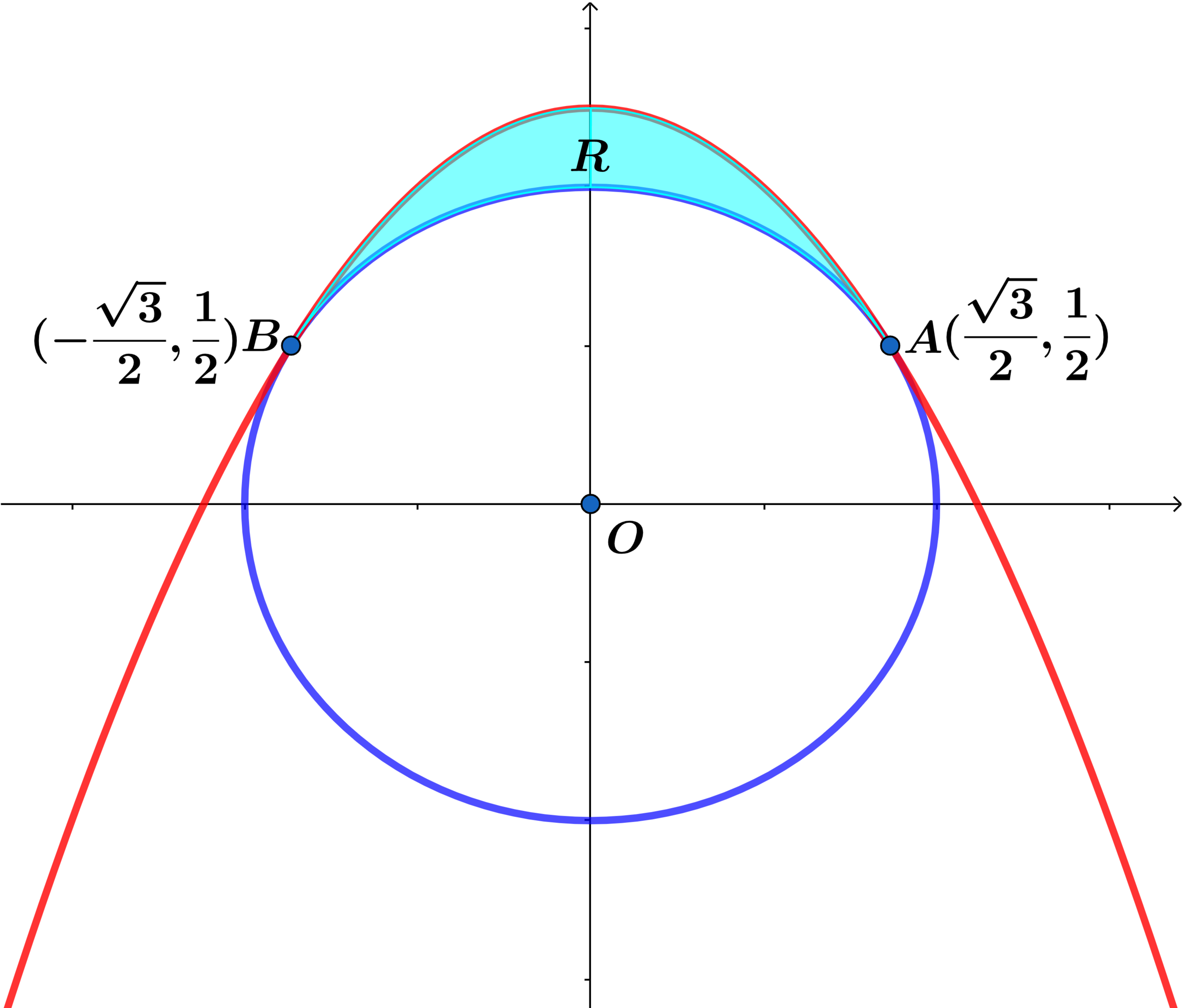Area Festival

A parabola is tangent to the circle at and as shown above.
If the area of the region bounded by the parabola and the circle above can be represented as , where and are coprime positive integers, find .
The answer is 7.
This section requires Javascript.
You are seeing this because something didn't load right. We suggest you, (a) try
refreshing the page, (b) enabling javascript if it is disabled on your browser and,
finally, (c)
loading the
non-javascript version of this page
. We're sorry about the hassle.
m O A = 3 1 ⟹ m ⊥ = − 3
m O B = − 3 1 ⟹ m ⊥ ∗ = 3
Let y = a x 2 + b x + c ⟹ d x d y = 2 a x + b
⟹ d x d y ∣ ( x = 2 3 ) = 3 a + b = − 3
and
d x d y ∣ ( x = 2 − 3 ) = − 3 a + b = 3
Solving the above system we obtain a = − 1 and b = 0 and using A ( 2 3 , 2 1 ) ⟹
2 1 = − 1 ( 2 3 ) 2 + c ⟹ c = 4 5 ⟹ y = 4 5 − x 2
and for the portion of the circle we have y = 1 − x 2
⟹ A = 2 ∫ 0 2 3 ( ( 4 5 − x 2 ) − 1 − x 2 ) d x
= 2 ( 2 3 − ∫ 0 2 3 1 − x 2 d x )
Letting x = sin ( θ ) ⟹ d x = cos ( θ ) d θ ⟹
∫ 0 2 3 1 − x 2 d x = ∫ 0 3 π ( 1 + cos ( 2 θ ) ) d θ = 2 1 ( θ + 2 1 sin ( 2 θ ) ) ∣ 0 3 π =
2 1 ( 3 π + 4 3 )
⟹ A = 3 − ( 3 π + 4 3 ) = 4 3 3 − 3 π = b a a − a π ⟹ a + b = 7 .